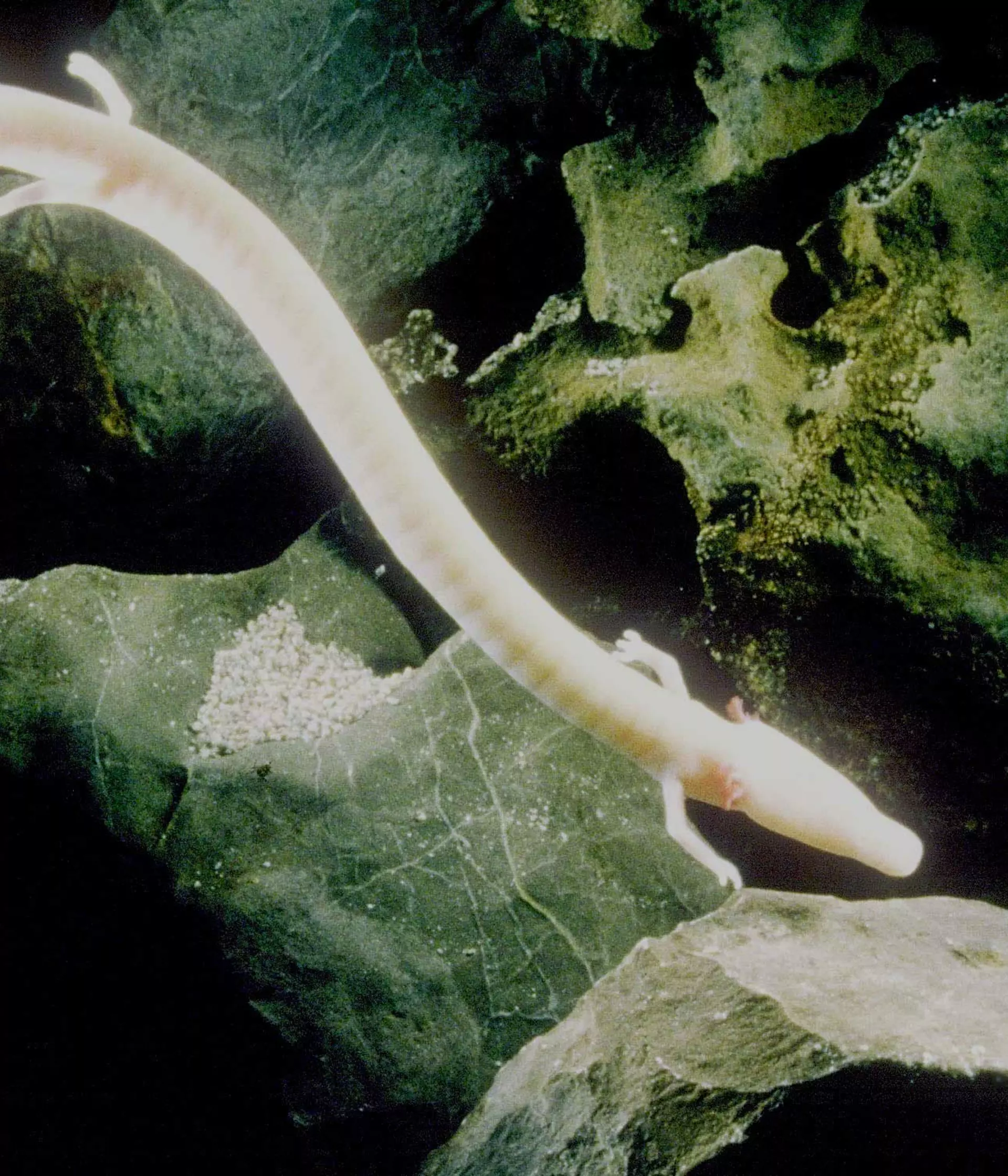Cave salamander
Olms can live up to 10 years without food and are adapted to living in total darkness. They eat, sleep, and breed underwater. Feeding on crustaceans like shrimp, insects and snails. Olm are only found in underground cave systems in the Balkans and are Europe’s only cave-adapted vertebrate, but despite being thought to live more than 100 years, they reproduce just once or twice per decade.
Olms are an ancient species of salamander, and diverged from all other amphibians almost 110 million years ago. Research published in our Journal of Zoology uncovered that olms live a sedentary lifestyle, and they can often be found within a few square metres over several years. This means olms are especially vulnerable to the threat of water pollution, and there is little knowledge of their population size because of their inaccessible habitat.
Protecting olms
Through our EDGE of existence programme, we supported Olm conservation to better understood these unique animals. Our partnership with conservationists based in Croatia built a better understanding of the species, helping inform work to protect their cave eco-systems.
